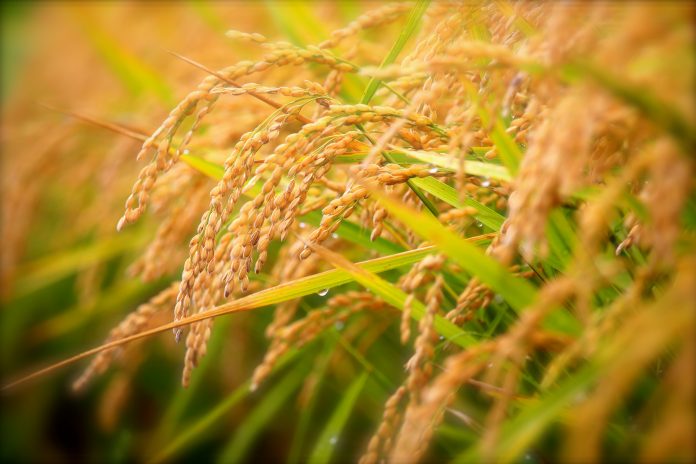Jamison Cruce, Senior Director, Government Affairs at USA Rice details how the U.S. rice industry advocates for strong farm bill safety net programmes
The Farm Bill is a sweeping piece of U.S. law that touches every American and many others around the world. Approximately every five years, the U.S. Congress drafts and negotiates a bill consisting of many titles that span farm, nutrition, and rural policy.
There have been 18 U.S. Farm Bills since the 1930s. While early bills focused solely on supporting farmers, they have grown to include a myriad of programmes and support an expansive set of stakeholders. The Agriculture Improvement Act of 2018, known informally as the 2018 Farm Bill, is the most recent to be signed into law and expires this year. The 2018 Bill has 12 titles: commodity, conservation, trade, nutrition, credit, rural development, research, forestry, energy, horticulture, crop insurance, and miscellaneous. This goes far beyond the scope of the early Farm Bills and more closely reflects the diverse constituencies of the U.S. Congress.
2018 Farm Bill provisions
For the U.S. rice industry and rice farmers at large, the 2018 Farm Bill delivered many successful provisions. The rice farmer’s primary and most important safety net, the Price Loss Coverage (PLC) Program, which provides assistance during times of depressed prices beyond a farmer’s control, was maintained and improved to be a better risk management tool for the modern-day family farm. While Federal crop insurance is a tool utilised by rice farmers, the safety net provided by the PLC Program is invaluable.
Working lands conservation programs, which help rice farmers remain at the forefront of being the best stewards of our land and natural resources, were prioritised and continued in true conservationist fashion allowing flexibility for local concerns to be addressed rather than a top-down, regulatory approach.
Other programmes important to the U.S. rice industry included trade promotion programmes, like the Market Access Program and Foreign Market Development Program, and international food aid assistance programmes, including Food for Peace, Food for Progress, and the McGovern-Dole Food for Education Programs.
Unforeseen challenges for farmers
However, while the 2018 Farm Bill was delivered for rice farmers at the time of passage, the implications of events beginning in 2020 and continuing today could not have been predicted. In March 2020 and throughout that summer, the COVID-19 pandemic led to high demand for rice and rice products. Conflated with supply chain challenges exacerbated by the pandemic, commodity markets were thrown for a loop. However, those supply chain challenges, including the domestic transportation of goods and exports, have persisted with an ongoing truck driver shortage, port congestion, and decreasing transportation reliability.
Further, natural disasters, including several hurricanes and wildfires, wreaked havoc on farmers, resulting in billions of dollars in losses in 2020 and 2021. In 2022, California experienced its third year of debilitating drought, which halved its rice production because of the regulatory nature of the state’s water allocations to farmers.
Stagnant prices across the rice industry
In the Mid-South and Gulf Coast, along with those able to plant rice in California, rice production input costs skyrocketed ahead of the 2022 planting season. With Russia’s invasion of Ukraine, a major energy and fertilizer producer in the region, the cost to grow a rice crop in the U.S. became a looming and troublesome concern for farmers and the industry. At the same time, most agricultural commodity markets began to see steep market price increases as the uncertainty of Ukraine’s corn and wheat crops grew, as did Ukraine’s inability to export those crops.
One major outlier has endured – stagnant U.S. rice market prices. Competition for rice versus other crops that saw these drastic price increases, like corn and soybeans, meant that U.S. rice acres nationally dropped to the lowest in 40 years.
To add insult to injury, World Trade Organization (WTO) subsidy violations by India and others artificially depressed world rice market prices.
And an economic study published by the Agricultural and Food Policy Center at Texas A&M University showed that two-thirds of U.S. rice farms would not be profitable in 2022.
Faced with these high production costs and stagnant prices, and contending with WTO violators, rice farmers had no alternative but to appeal to the U.S. government for ad hoc assistance ahead of the next Farm Bill reauthorisation. While rice farmers will receive modest assistance for the 2022 crop year, sound and meaningful U.S. farm policy will be key for the next five years as Congress writes the next Farm Bill. Over the past year, U.S. rice farmers have worked to develop policy recommendations to ensure the next Farm Bill delivers for the industry.
2023 Farm Bill priorities
As the key risk management tool and safety net for rice farmers, the U.S. rice industry believes that the PLC program must be bolstered. The reference price (the triggering mechanism that determines assistance), should be increased to reflect present-day rice farming conditions. The current rice reference price was established in the 2014 Farm Bill and based on the cost of production in 2012 – more than a decade ago.
In the face of climate change, rice farmers also need the ability to continue implementing practices and systems through working lands conservation programs, and they believe these should be prioritised over land retirement or set-aside programs, especially with potential global food shortages.
And while these are the key priorities for the U.S. rice industry going into the next Farm Bill, many other policies will be brought forward that will also need to be addressed.
Passing U.S. farm policy is always a daunting task, but the U.S. rice industry urges Congress to act this year so that rice farmers have all of the tools to best manage their operations. This will enable them to continue providing consumers in the U.S. and worldwide with a sustainable product that is grown under some of the highest environmental and labour standards anywhere.











